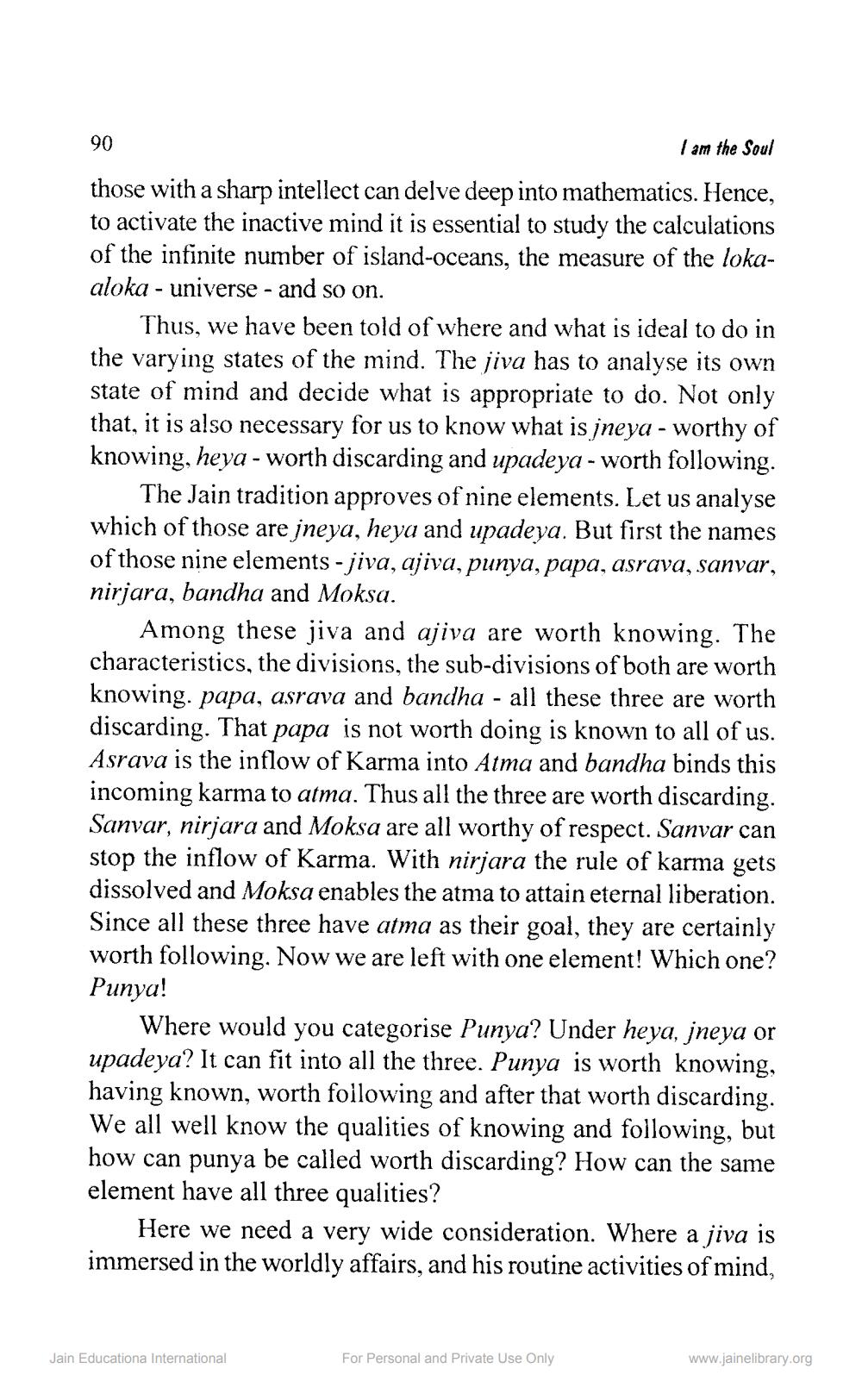________________
90
I am the Soul
those with a sharp intellect can delve deep into mathematics. Hence, to activate the inactive mind it is essential to study the calculations of the infinite number of island-oceans, the measure of the lokaaloka - universe - and so on.
Thus, we have been told of where and what is ideal to do in the varying states of the mind. The jiva has to analyse its own state of mind and decide what is appropriate to do. Not only that, it is also necessary for us to know what is jneya - worthy of knowing, heya - worth discarding and upadeya - worth following.
The Jain tradition approves of nine elements. Let us analyse which of those are jneya, heya and upadeya. But first the names of those nine elements - jiva, ajiva, punya, papa, asrava, sanvar, nirjara, bandha and Moksa.
Among these jiva and ajiva are worth knowing. The characteristics, the divisions, the sub-divisions of both are worth knowing. papa, asrava and bandha - all these three are worth discarding. That papa is not worth doing is known to all of us. Asrava is the inflow of Karma into Atma and bandha binds this incoming karma to atma. Thus all the three are worth discarding. Sanvar, nirjara and Moksa are all worthy of respect. Sanvar can stop the inflow of Karma. With nirjara the rule of karma gets dissolved and Moksa enables the atma to attain eternal liberation. Since all these three have atma as their goal, they are certainly worth following. Now we are left with one element! Which one? Punya!
Where would you categorise Punya? Under heya, jneya or upadeya? It can fit into all the three. Punya is worth knowing, having known, worth foilowing and after that worth discarding. We all well know the qualities of knowing and following, but how can punya be called worth discarding? How can the same element have all three qualities?
Here we need a very wide consideration. Where a jiva is immersed in the worldly affairs, and his routine activities of mind,
Jain Educationa International
For Personal and Private Use Only
www.jainelibrary.org




